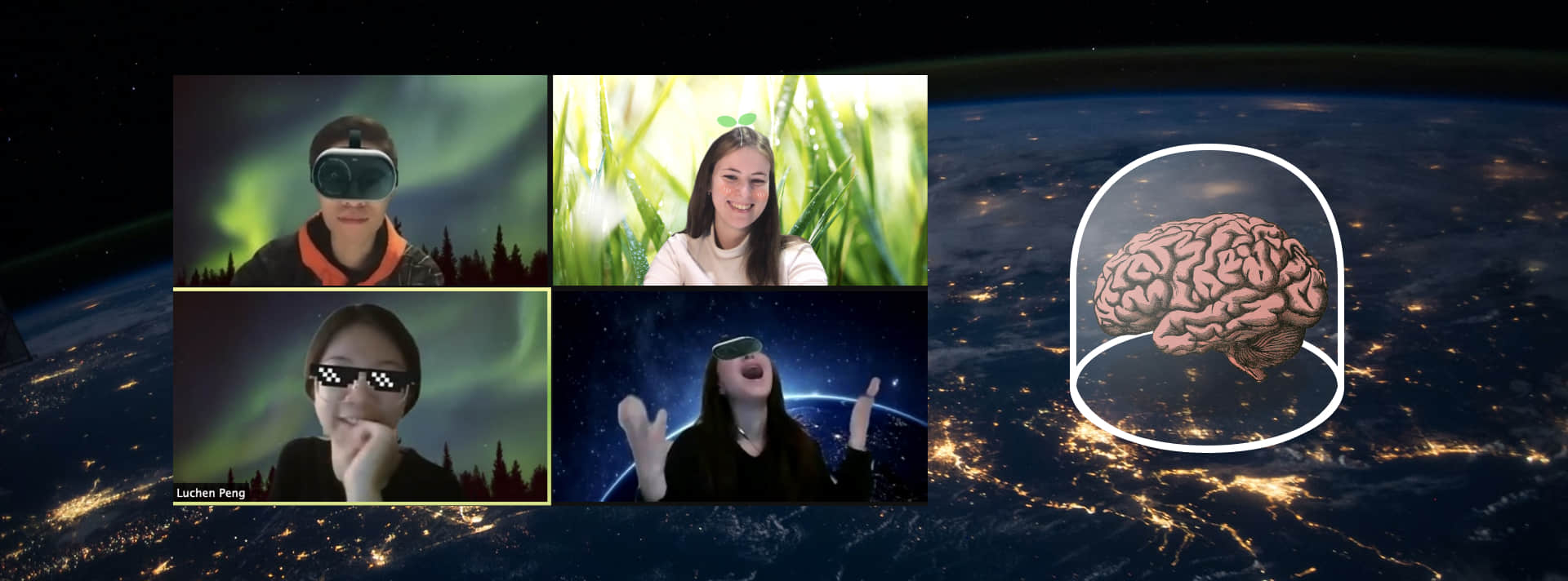
Journey to the Jar
Xenosomatic - Part 2
Brief: Design a sensory-based ritual or experience for the characters of the Xenosomatics world/culture we build together.
Team: Tiana, Maria S, Luchen, Sylvester.
After the workshop with Susan, our group launched an initial meeting to review the brief. We discussed serval ideas related to handwritten notes communication, firefly synchronisation, echolocation within zoom, heads in jars. I was engaged in bio-sync: biologies natural trending towards self-organisation, resulting in the harmonising in biorhythms. From heart pacemaker with 10,000 cells to a collective flash of fireflies, each element synchronises to form a distributed system. But sadly we didn’t explore further.
Each of us expanded them into narrative rituals. All ideas lead to the complicated crossover between cyberspace, cognition and biological mechanism. Are we all in a virtual space if we are merely talking through Zoom? Can all beings leave their bodies and remain conscious? And what would this process feel? Based on my rough script of ‘heads in jars’, we decided to simulate transferring our consciousness to virtual space.

Background story: the earth is uninhabitable after nuclear wars. Species with solid bodies can not endure radiation, and only formless aliens can survive. The Oankolians (us as amorphous aliens) will guide all beings (classmates) to upload their consciousness into a virtual space and celebrate at the end.
Tutorial and play-test
During the tutorial, Susan appreciated the rich background in our concept. She suggested we give more details for each step and combined more interactions such as muscle tensing and weights sensing to create more immersive experiences. In play-test with Alex, Binru, Sanya and Rikkie, they also admire our explicit instructions, sound effects and world-building in the process. However, they sensed the lack of imagination and interplay between participants. We edited the ending with a touch of humour: aliens plan to steal their bodies, and all participants need to resonate to escape the virtual prison.

Final Outcome and Reflection
Our online ritual is quite successful. Classmates said they get immersed with all the generative voice, diegetic sound effects, embodied interactions with water and blanket. Zhaolu even felt scary at some point. Integrating Zoom in our story and create ‘formless beings’ works very well.

However, we also make it too restricted by creating a narrative ritual, even adding more activities at the end. I agree with Alastair that the whole experience leans more to a ‘lecture’ than a ‘workshop’, in which there is not much freedom for players to explore what they can do. It is worth noting that some participants enjoy a more guided process, saying it makes them easier to engage. So the problem remains: whether we should give more imaginative space or more guidance? Back to LARPing, there are some potential improvements if we considered more on mechanisms: involving implicit rules, encourage replacements with objects around the room, and replace some monologues with improvisation from players.
In general, this LARPing design session inspired me to rethink how to manage engagement in collaboration. It is challenging and always needs iteration. But with proper consideration, LARPing could be a useful design research method.
- Larpwriter Summer School (2016). Mechanics - Fader talk by Bjarke Pedersen. YouTube. Available at: https://www.youtube.com/watch?v=wfqkMnPiubo.